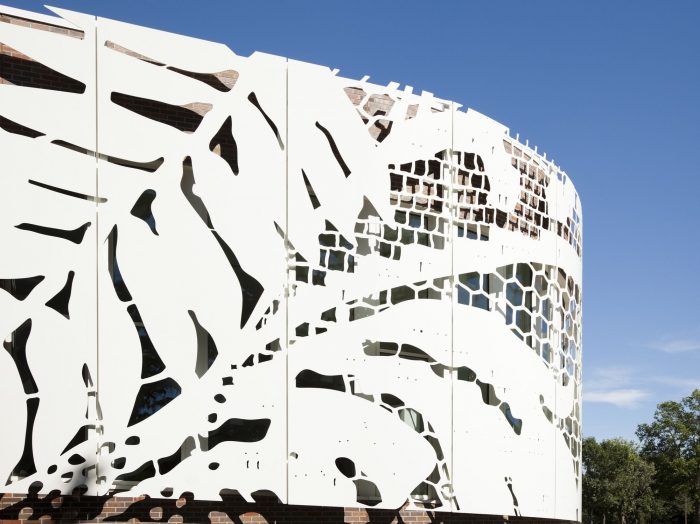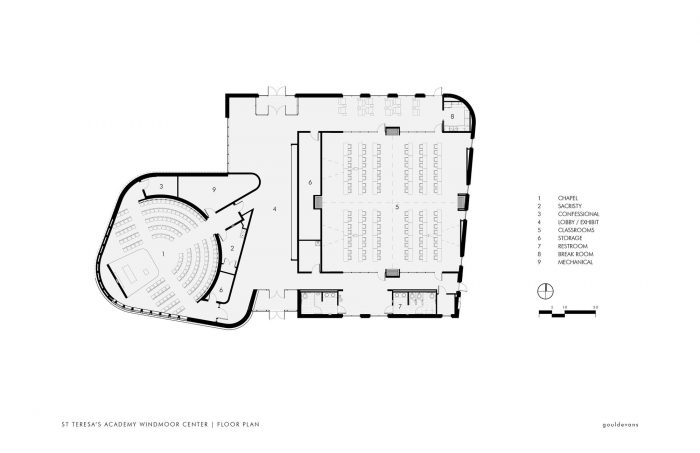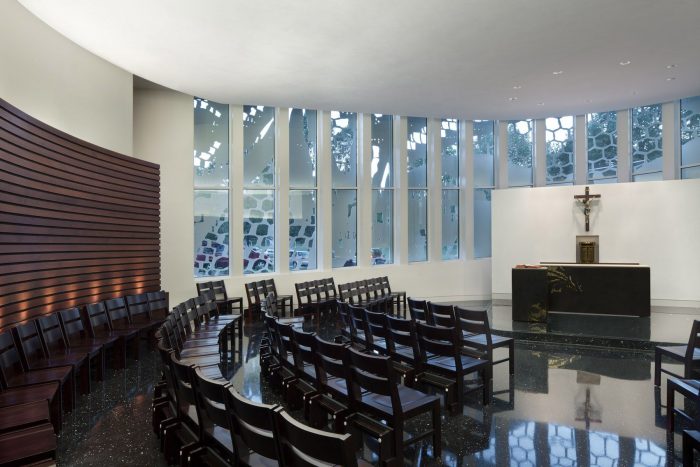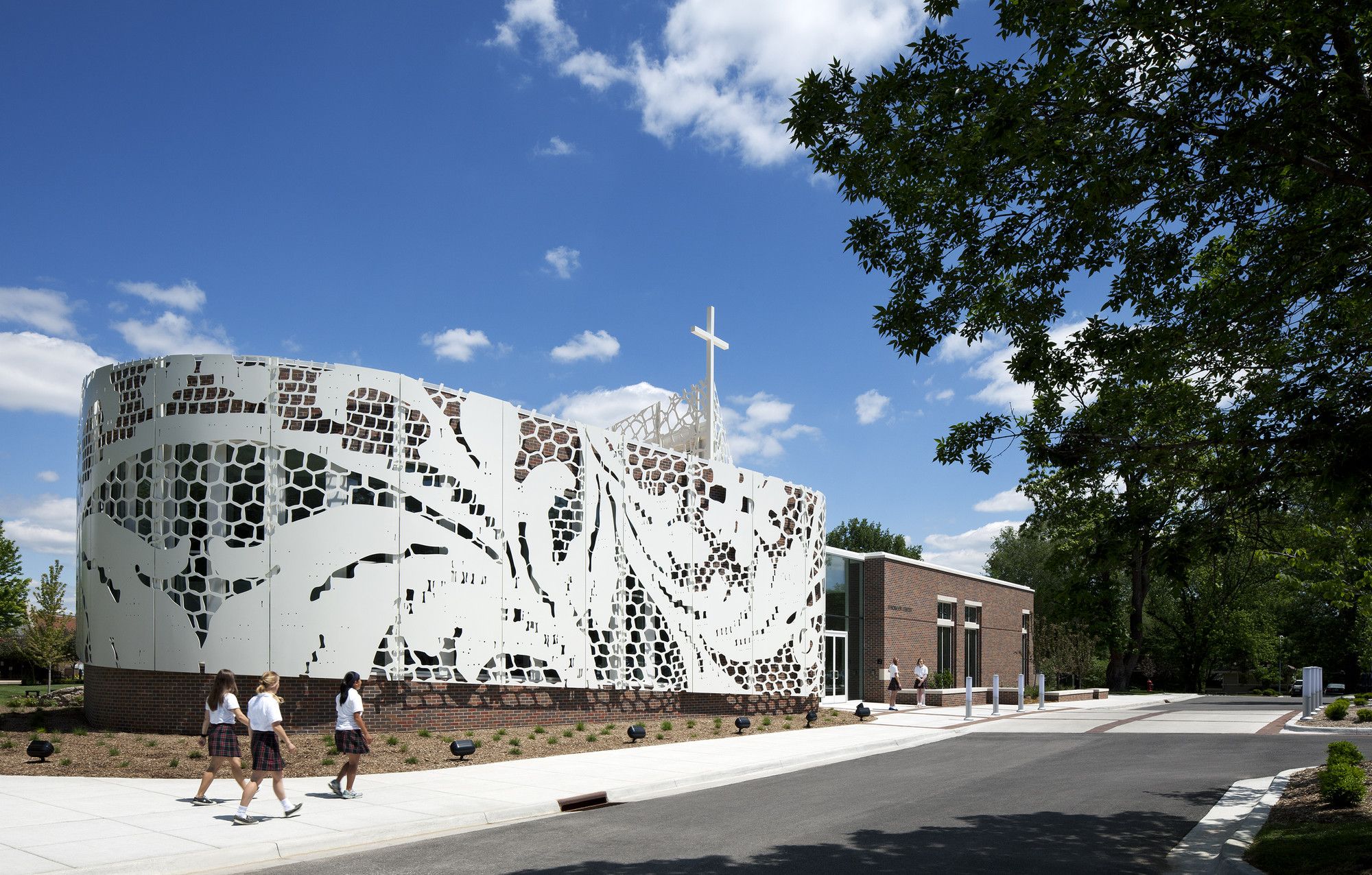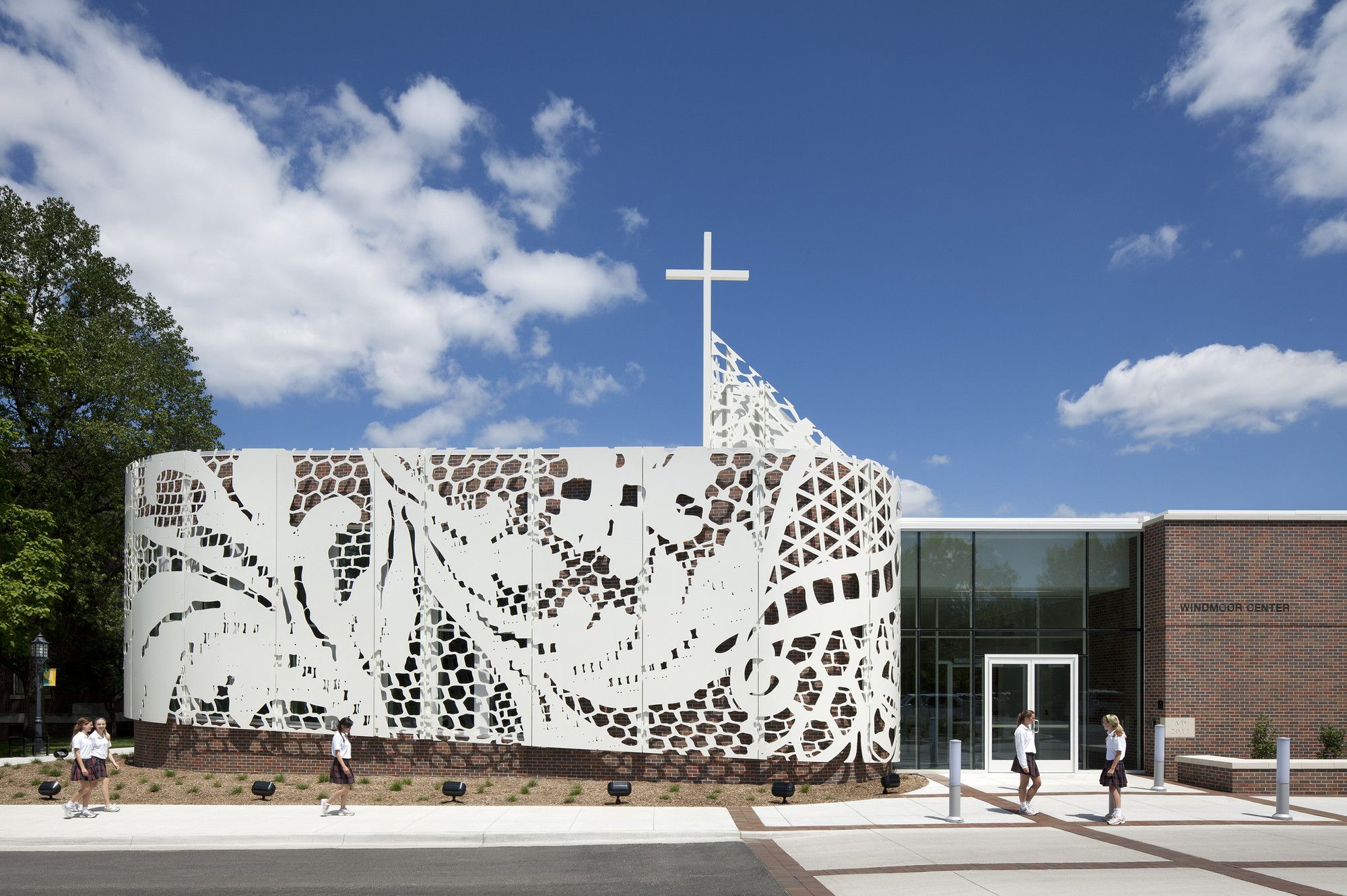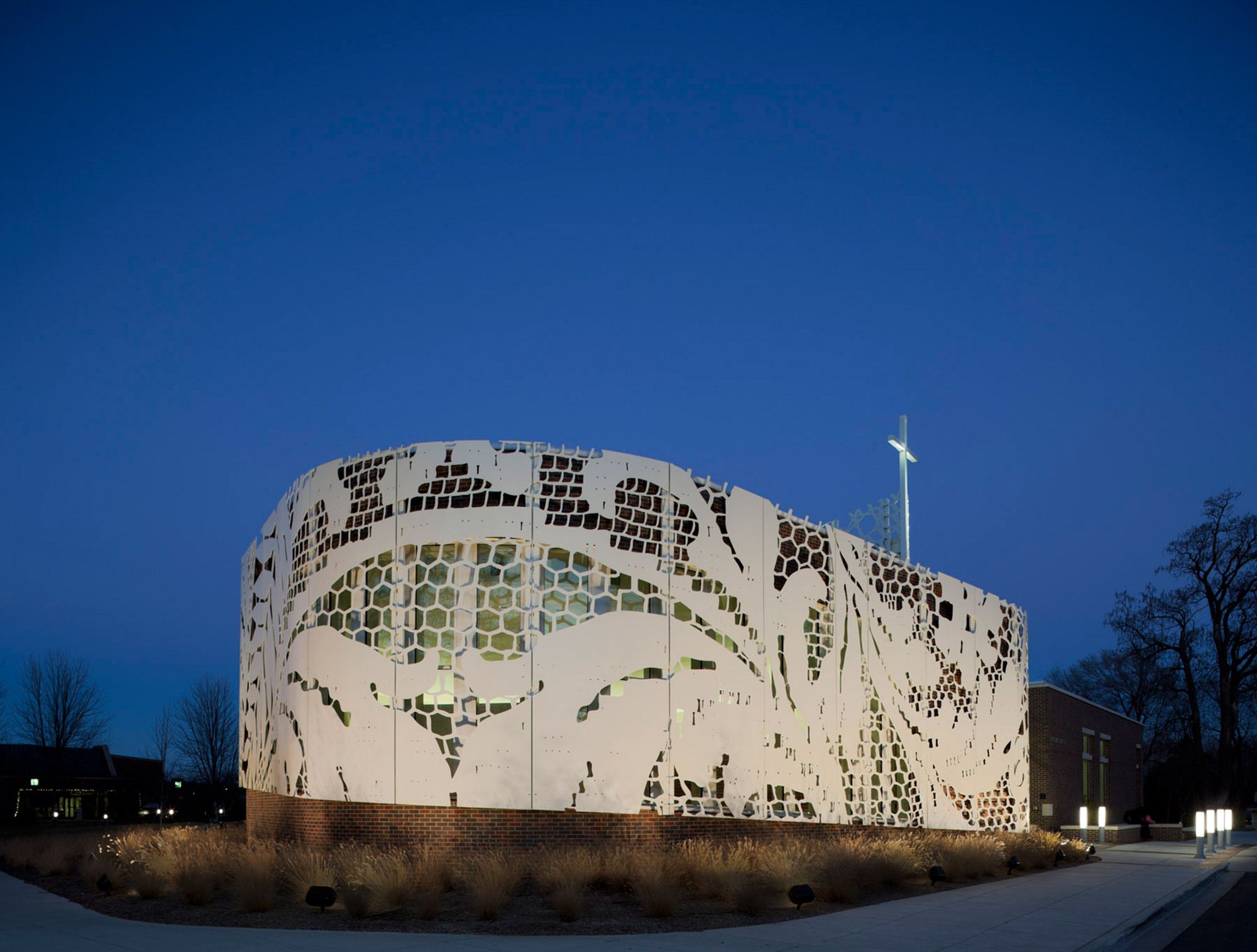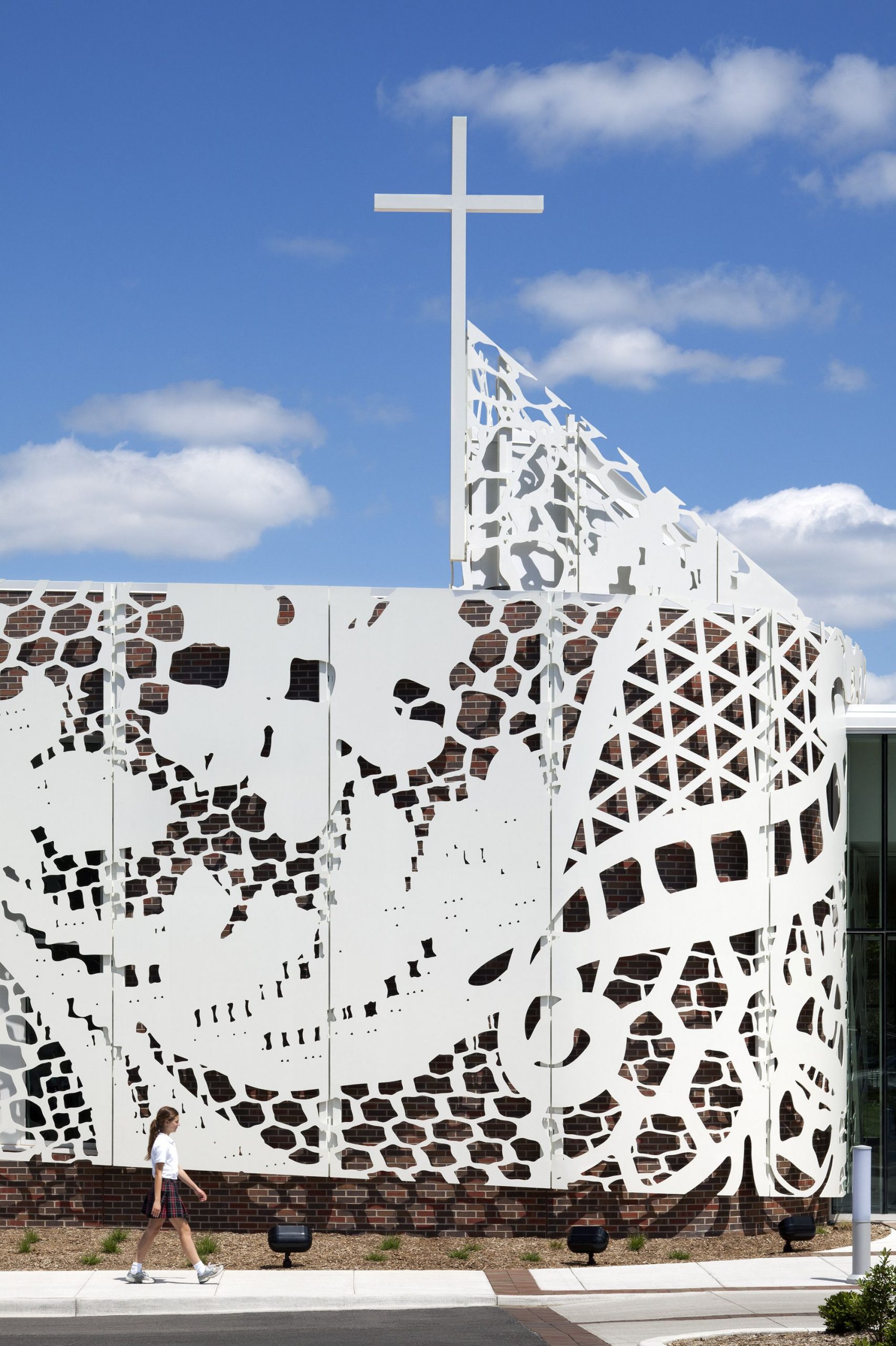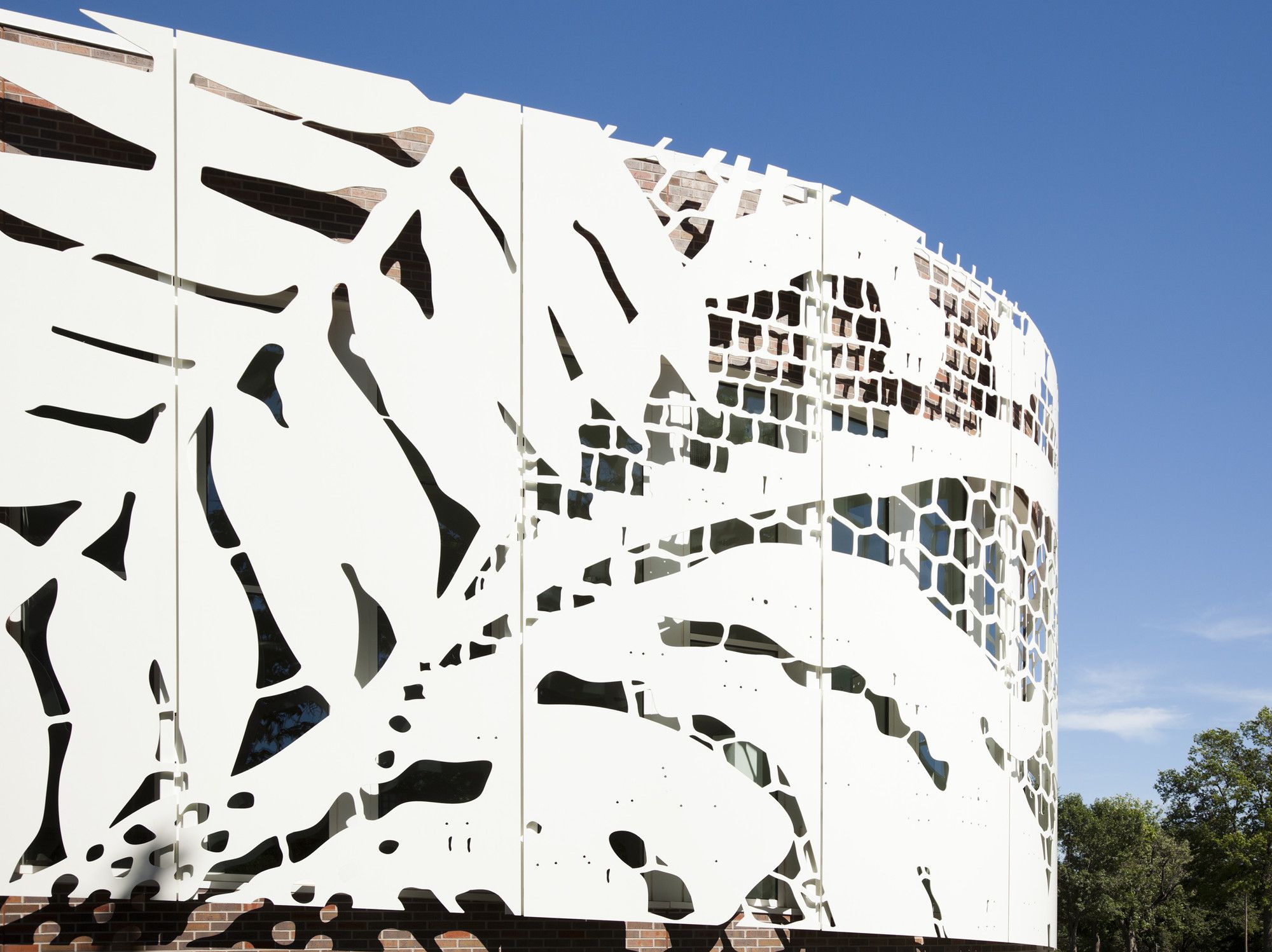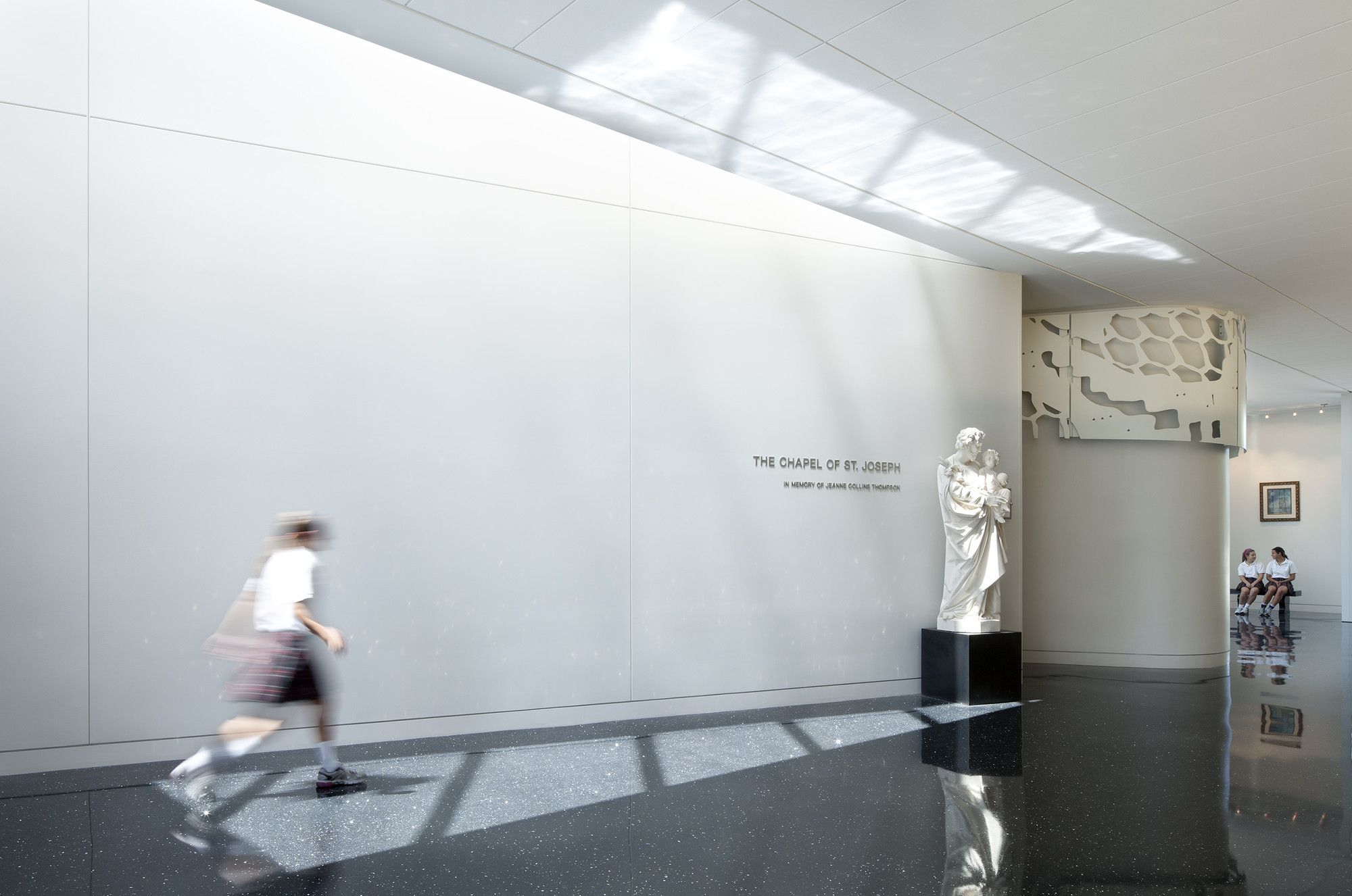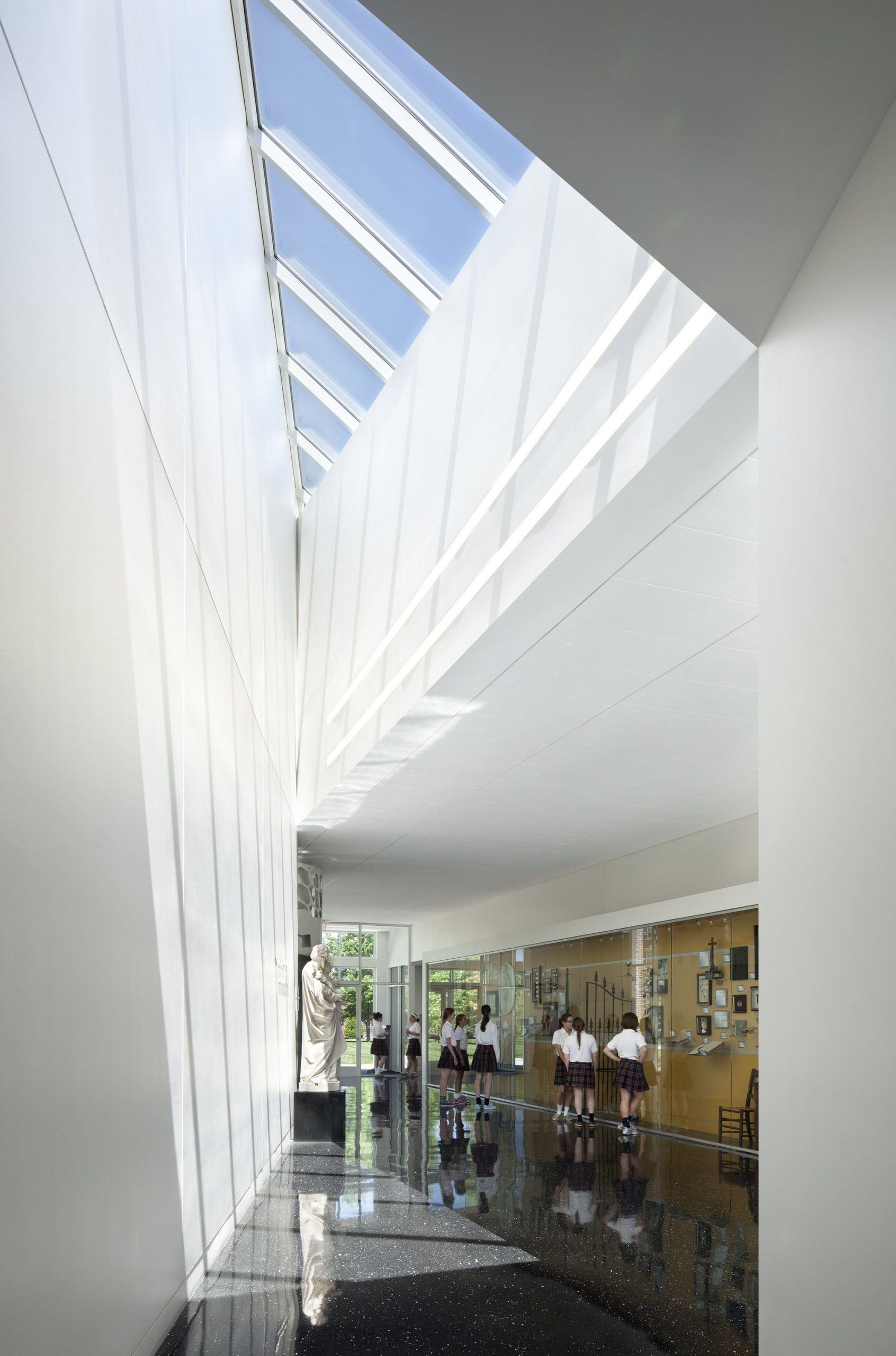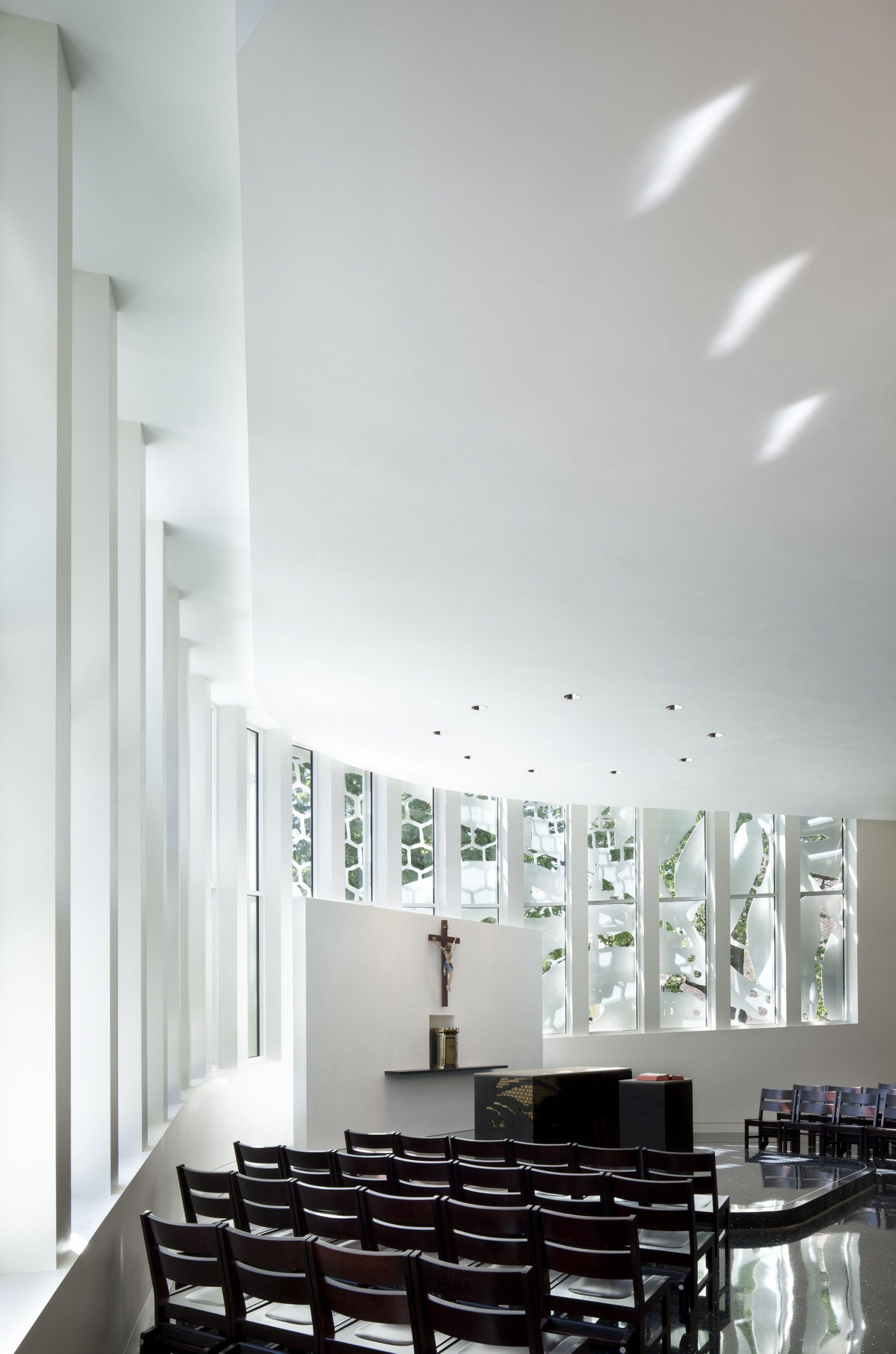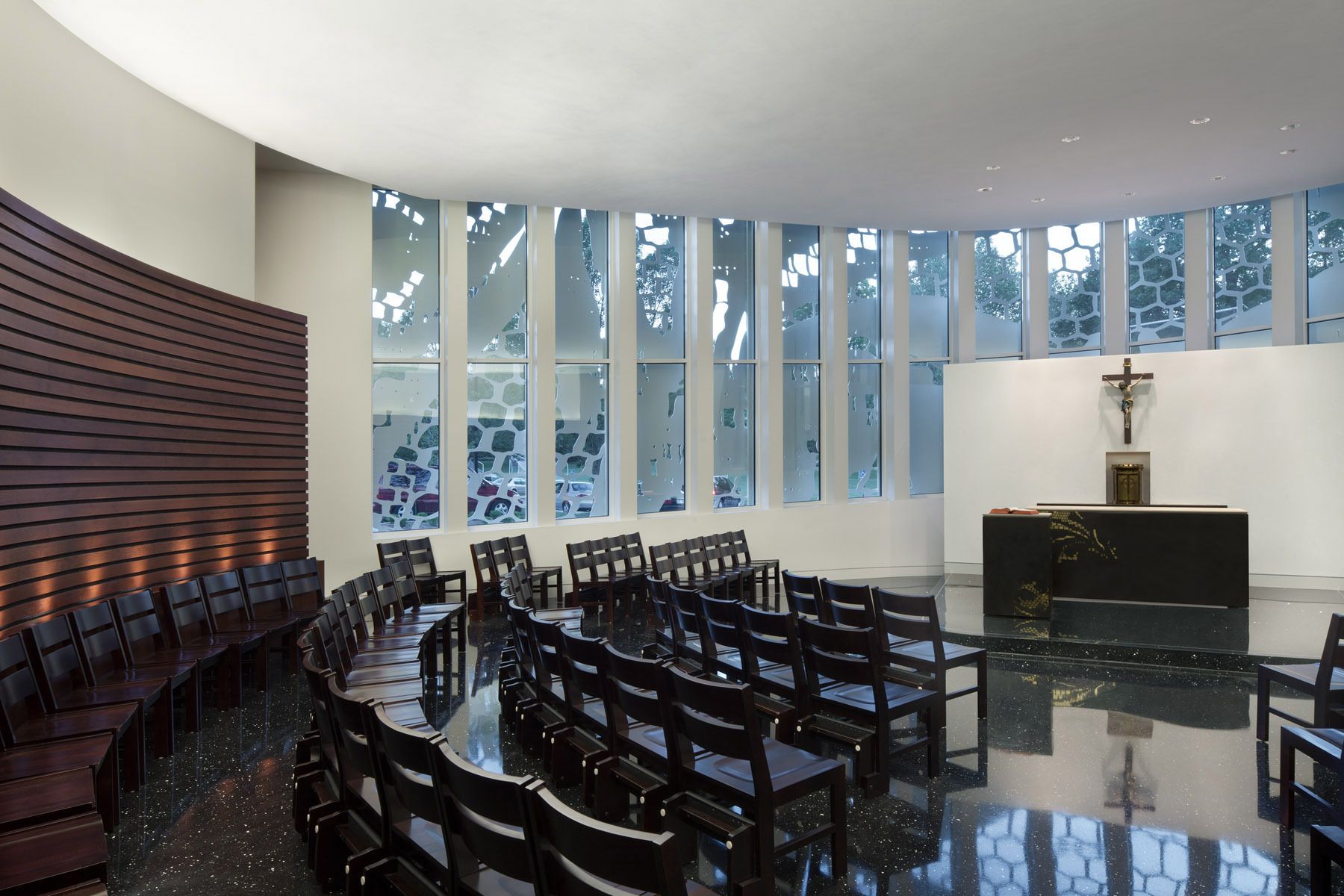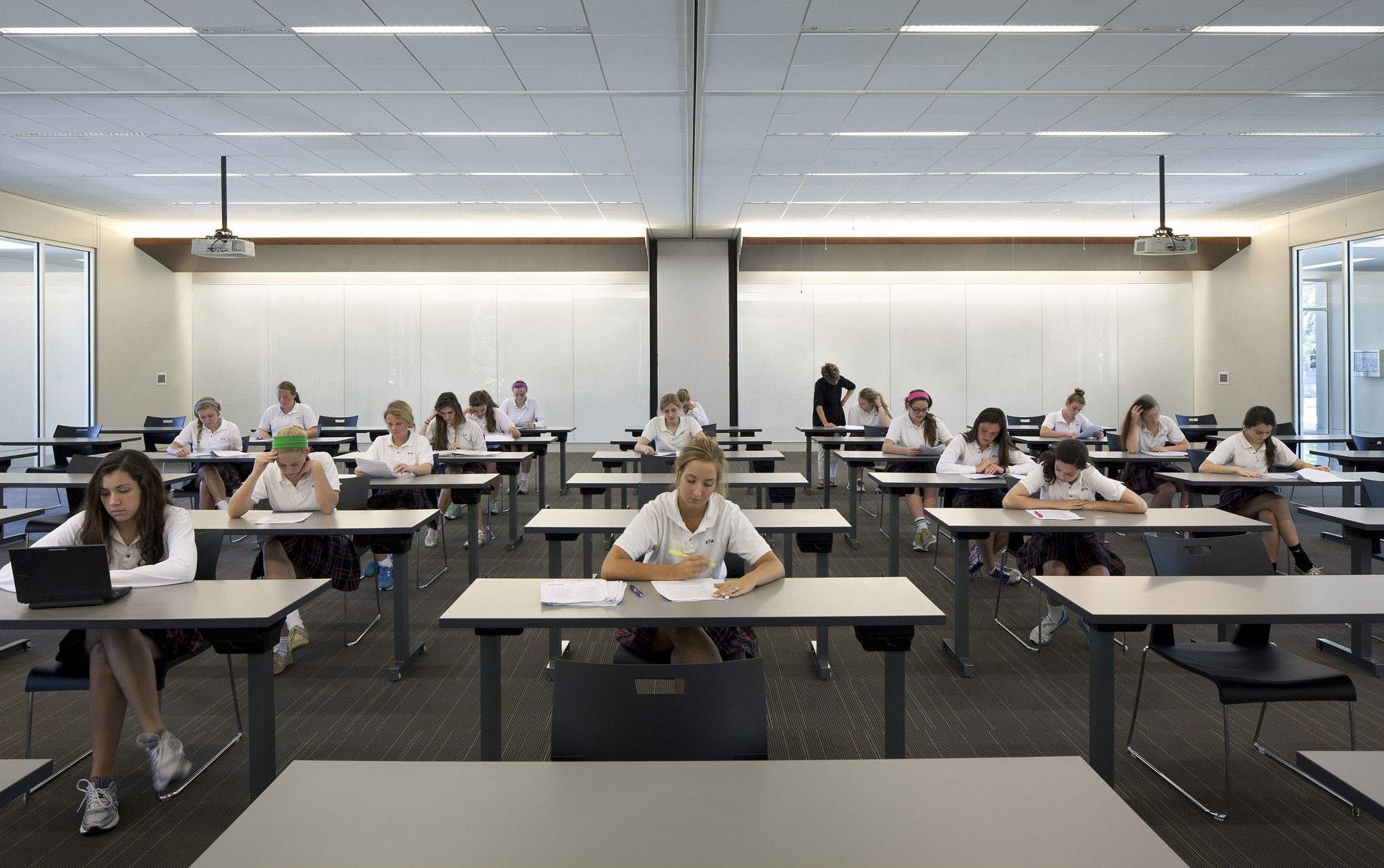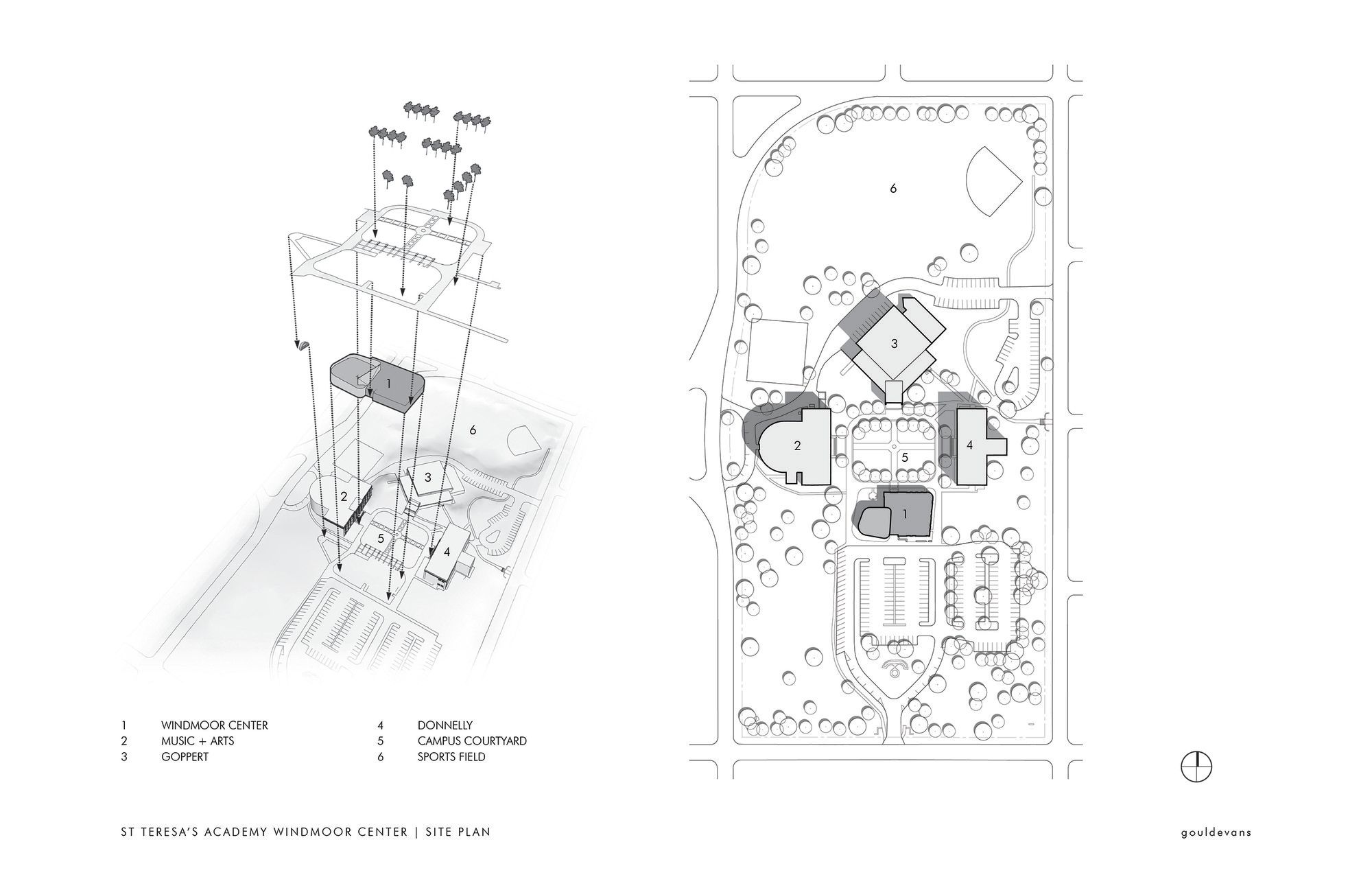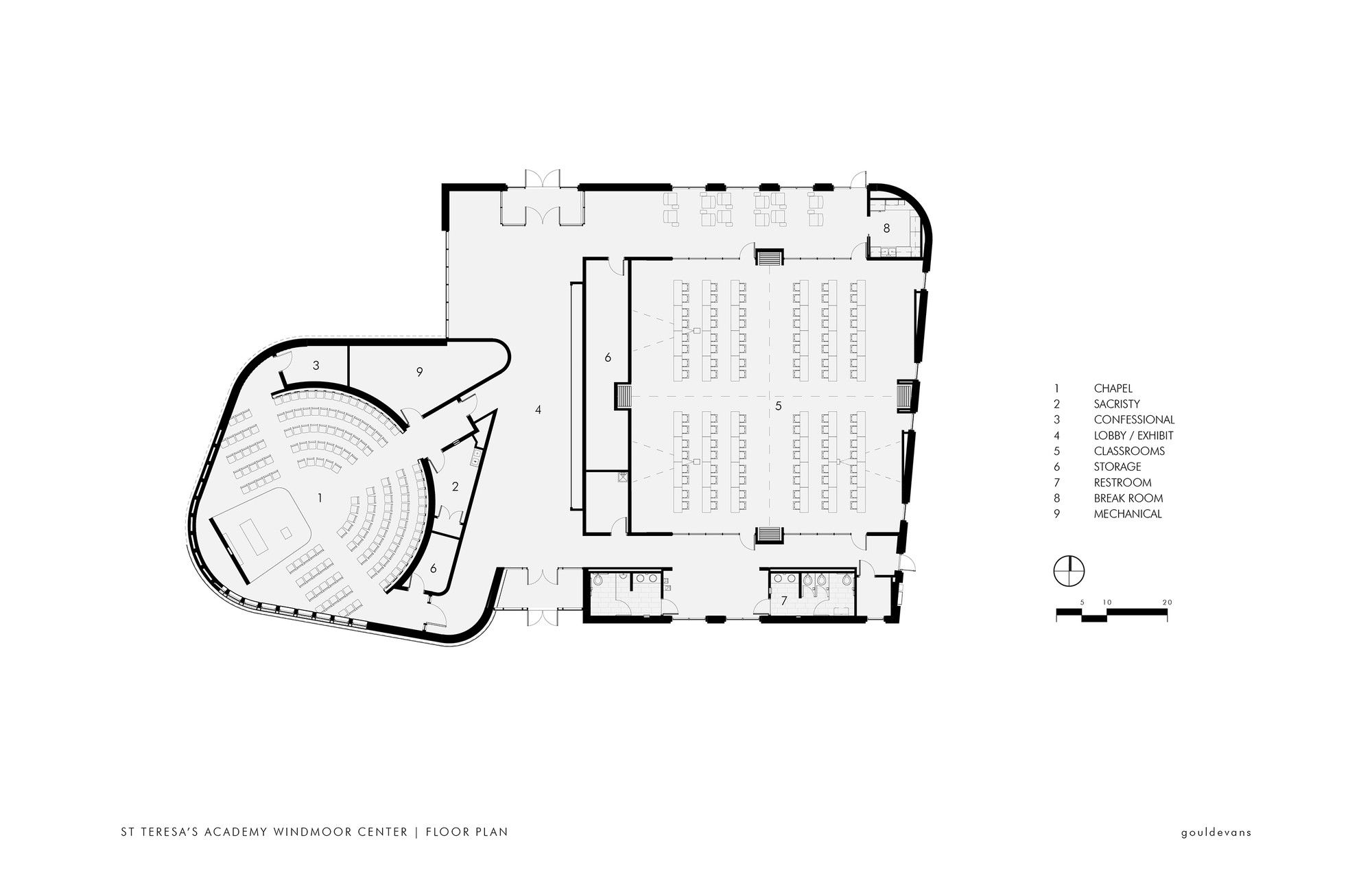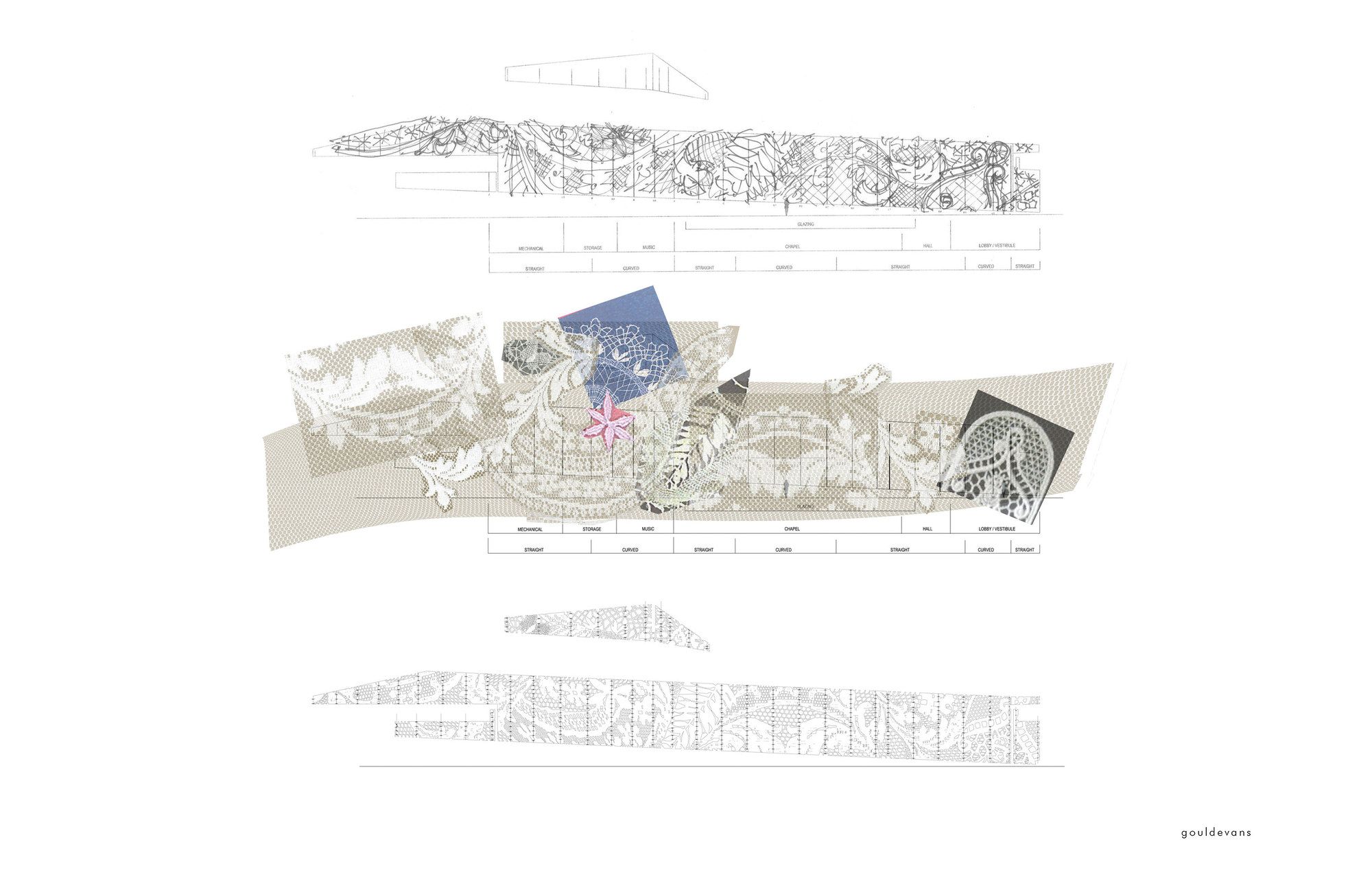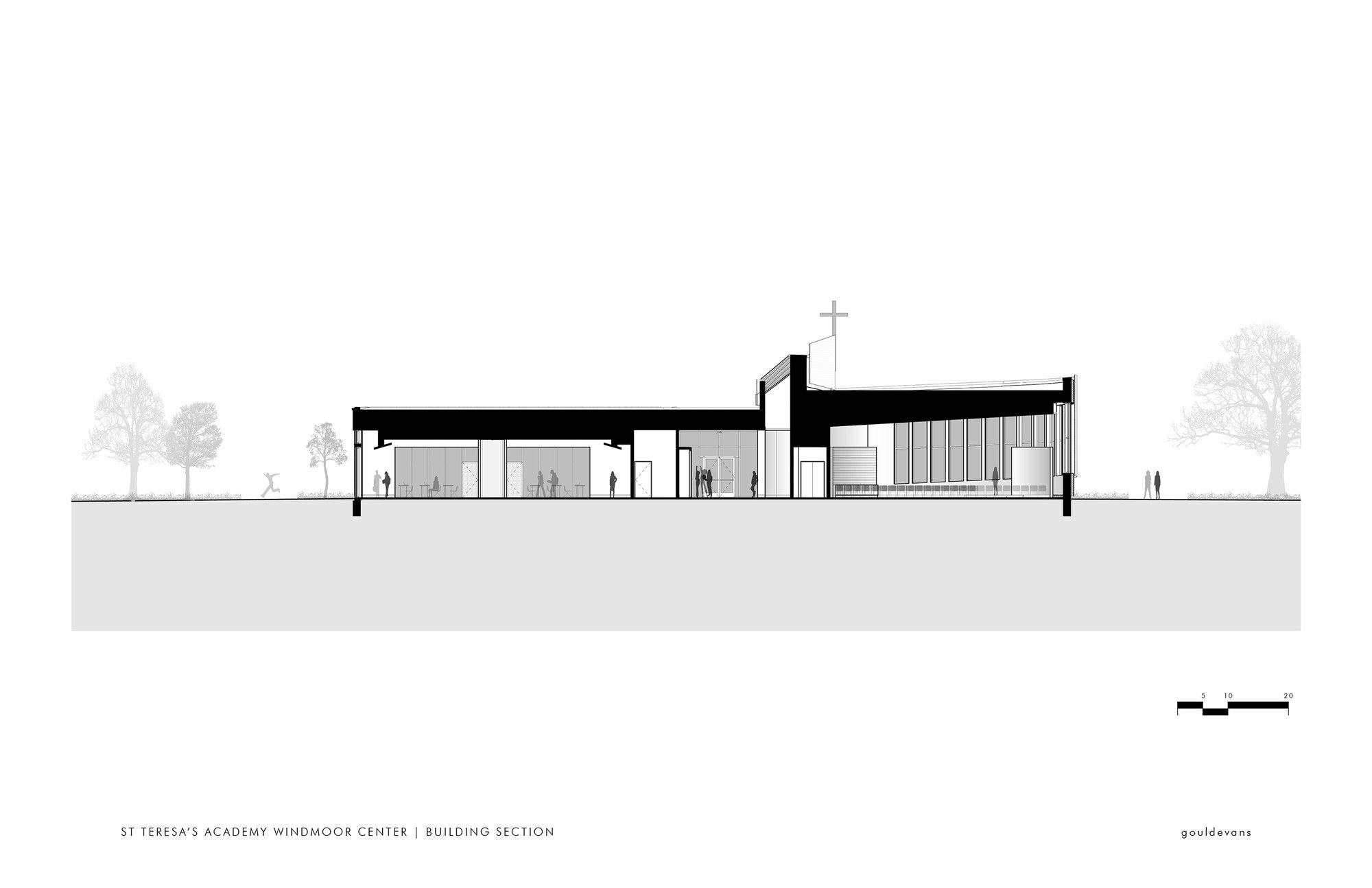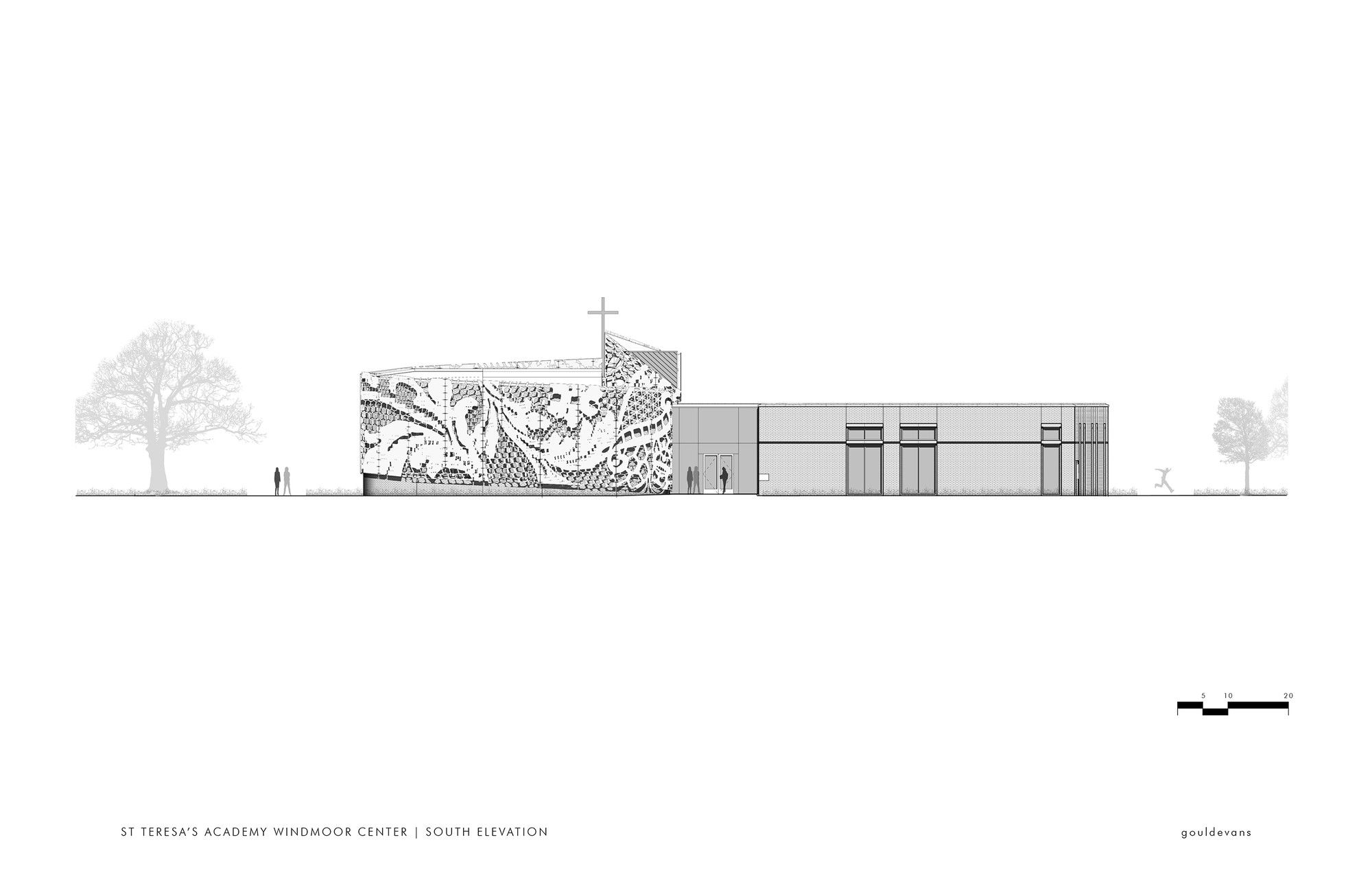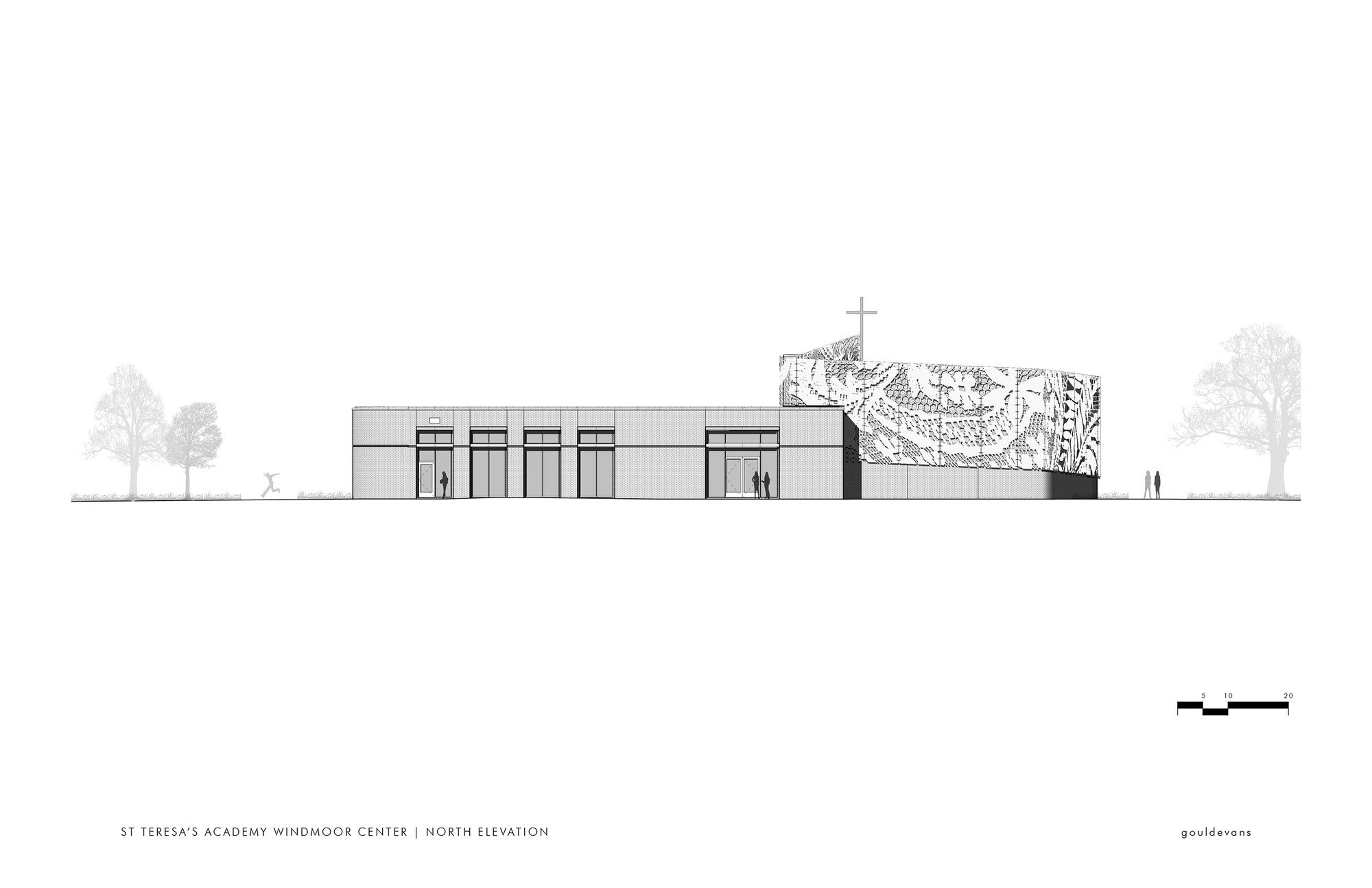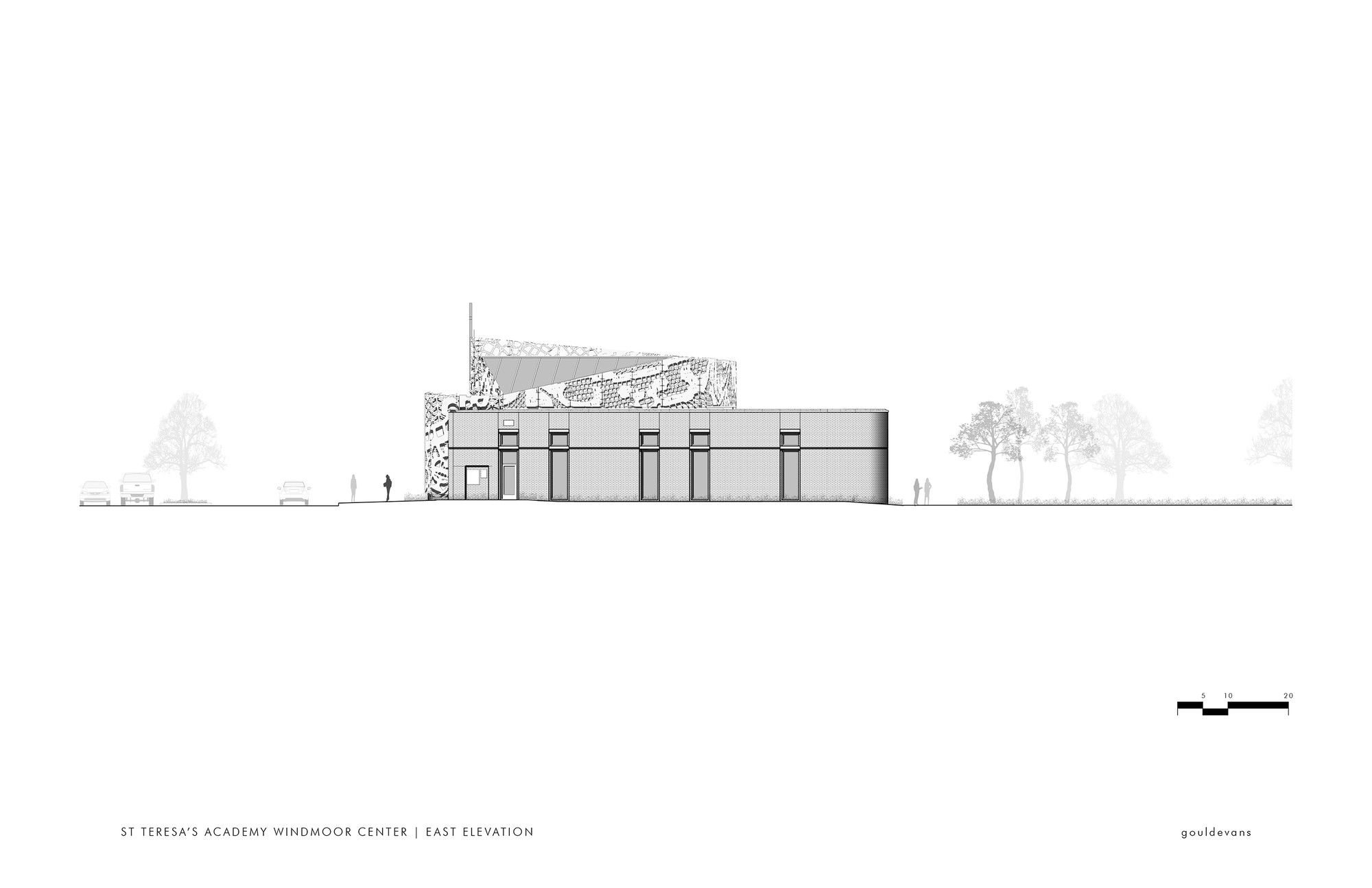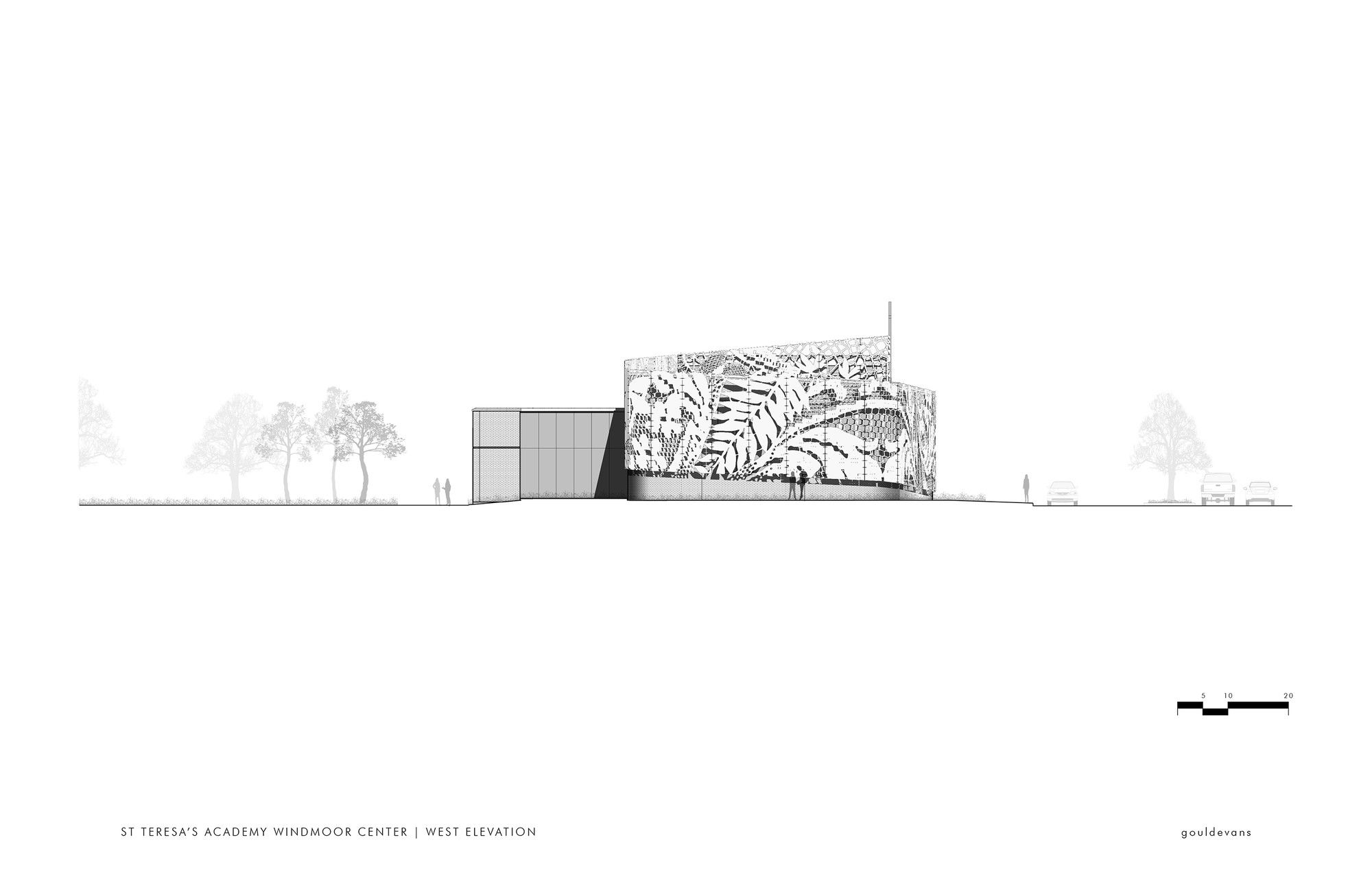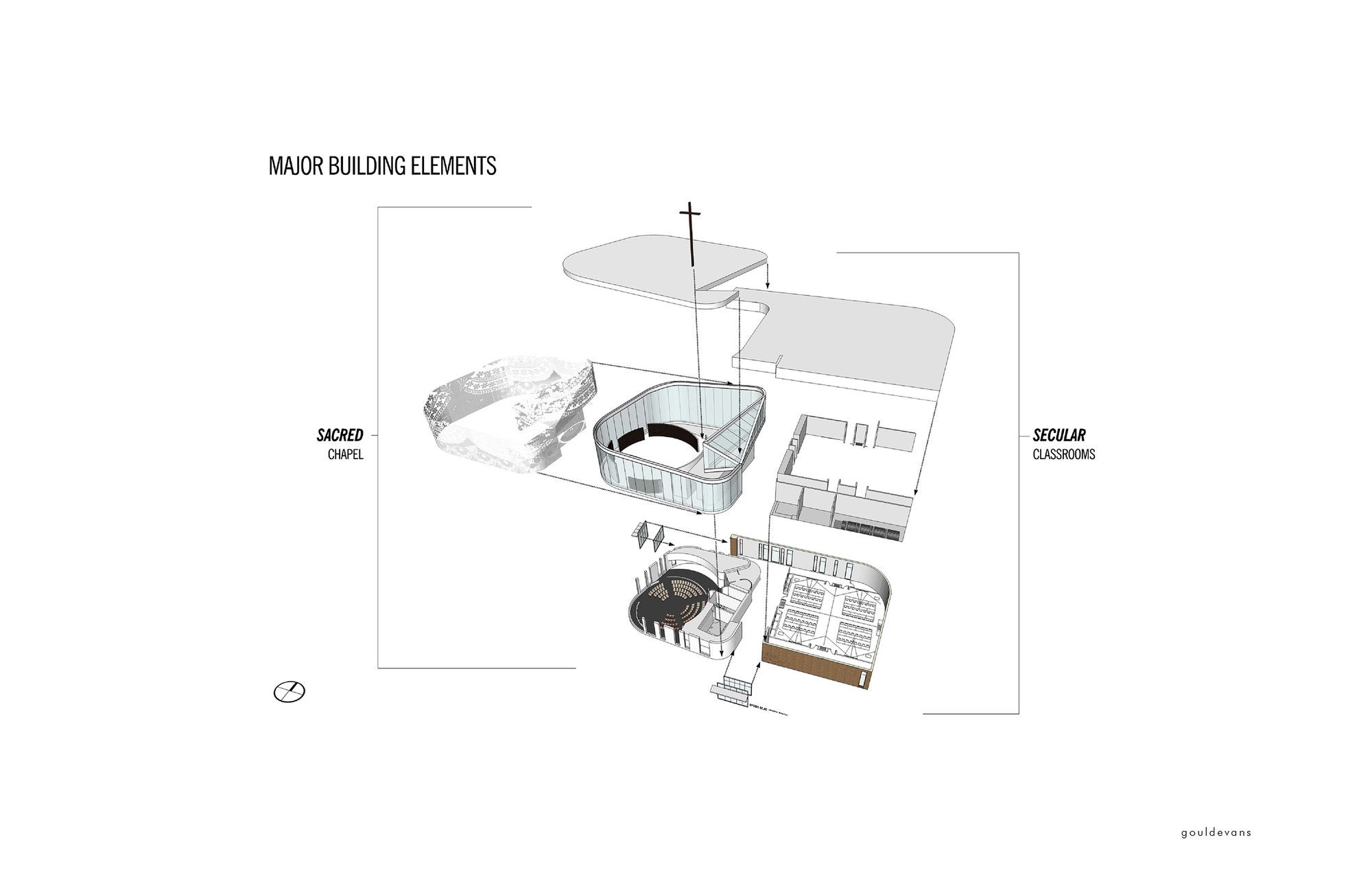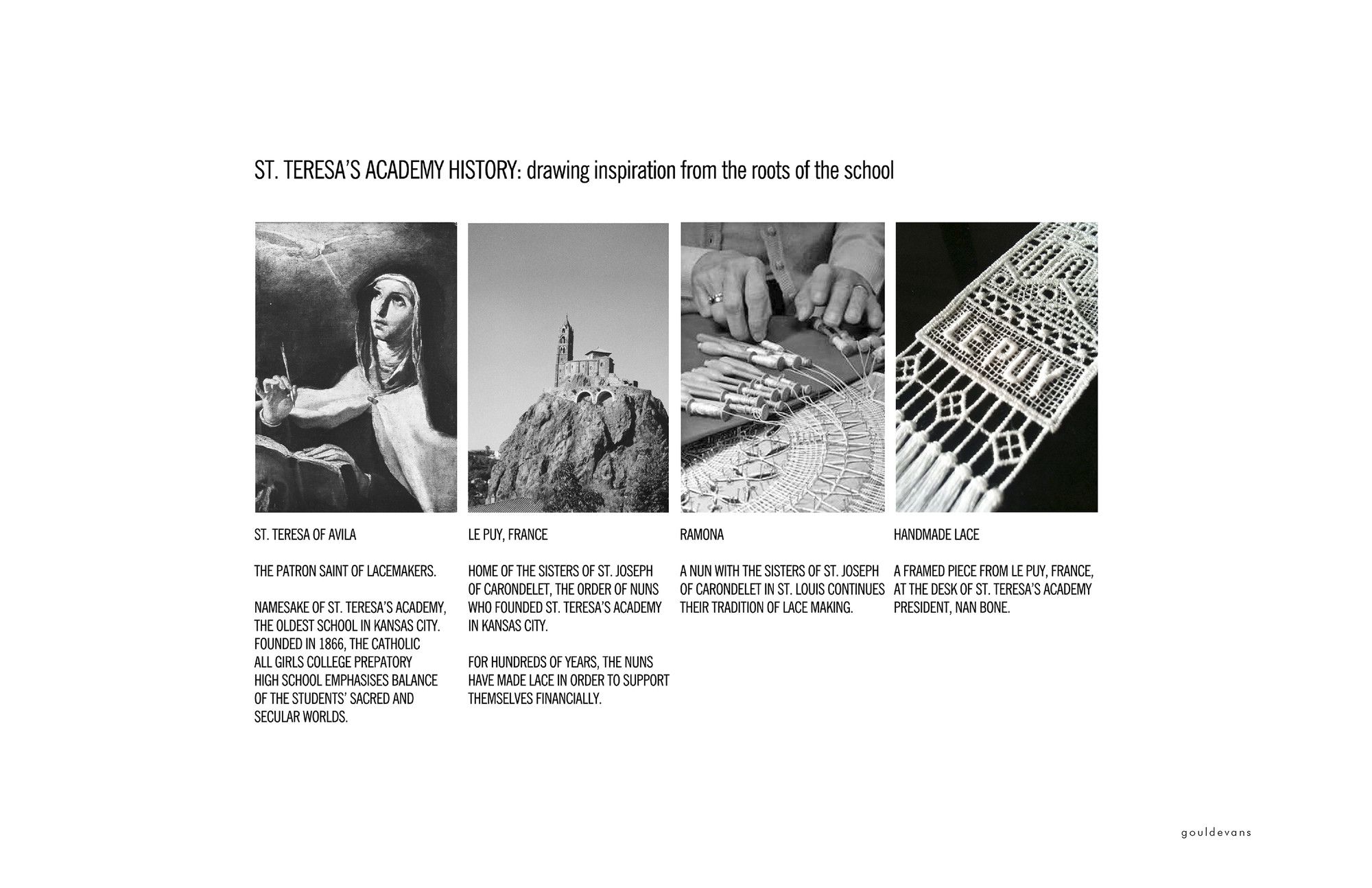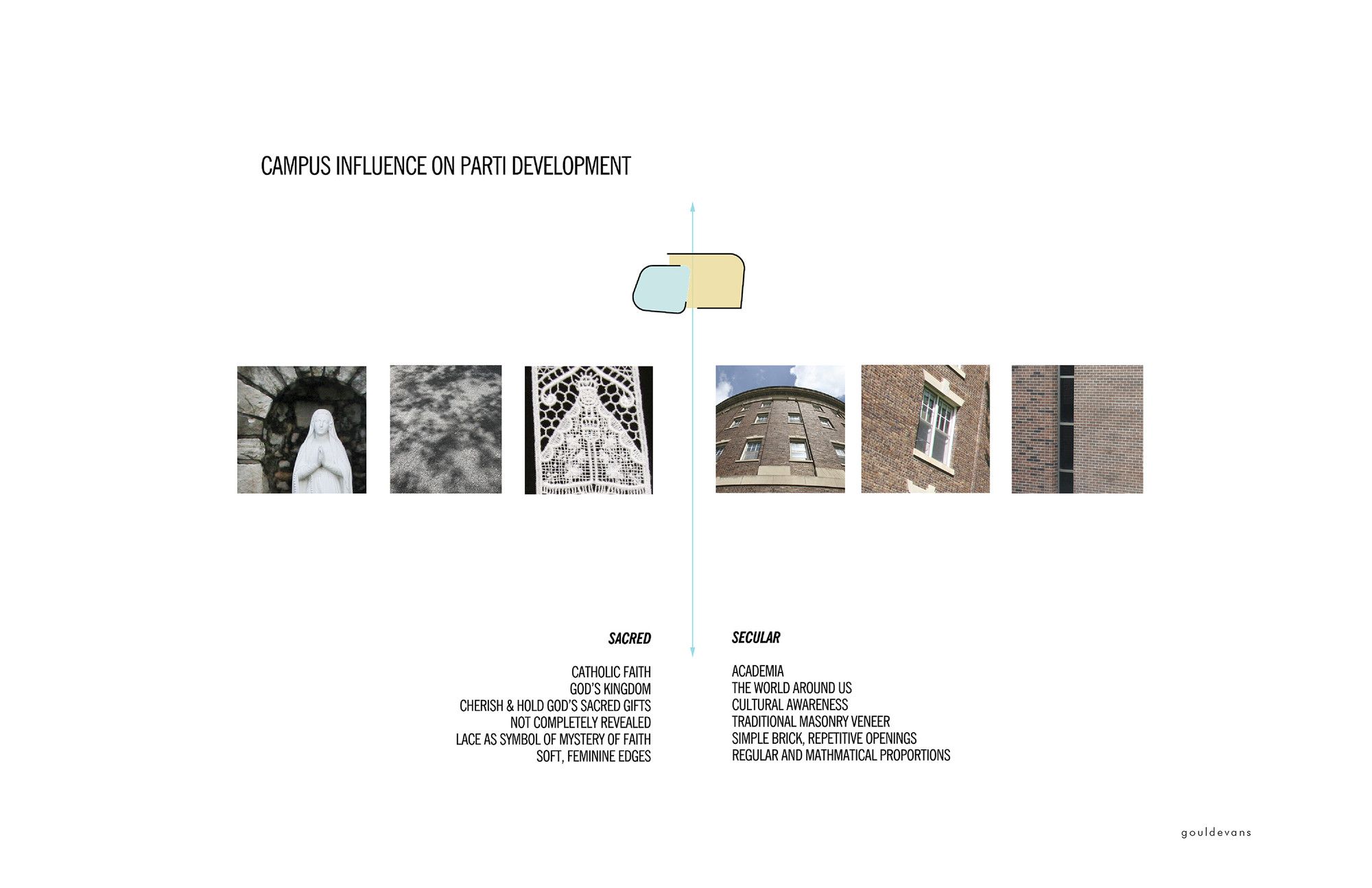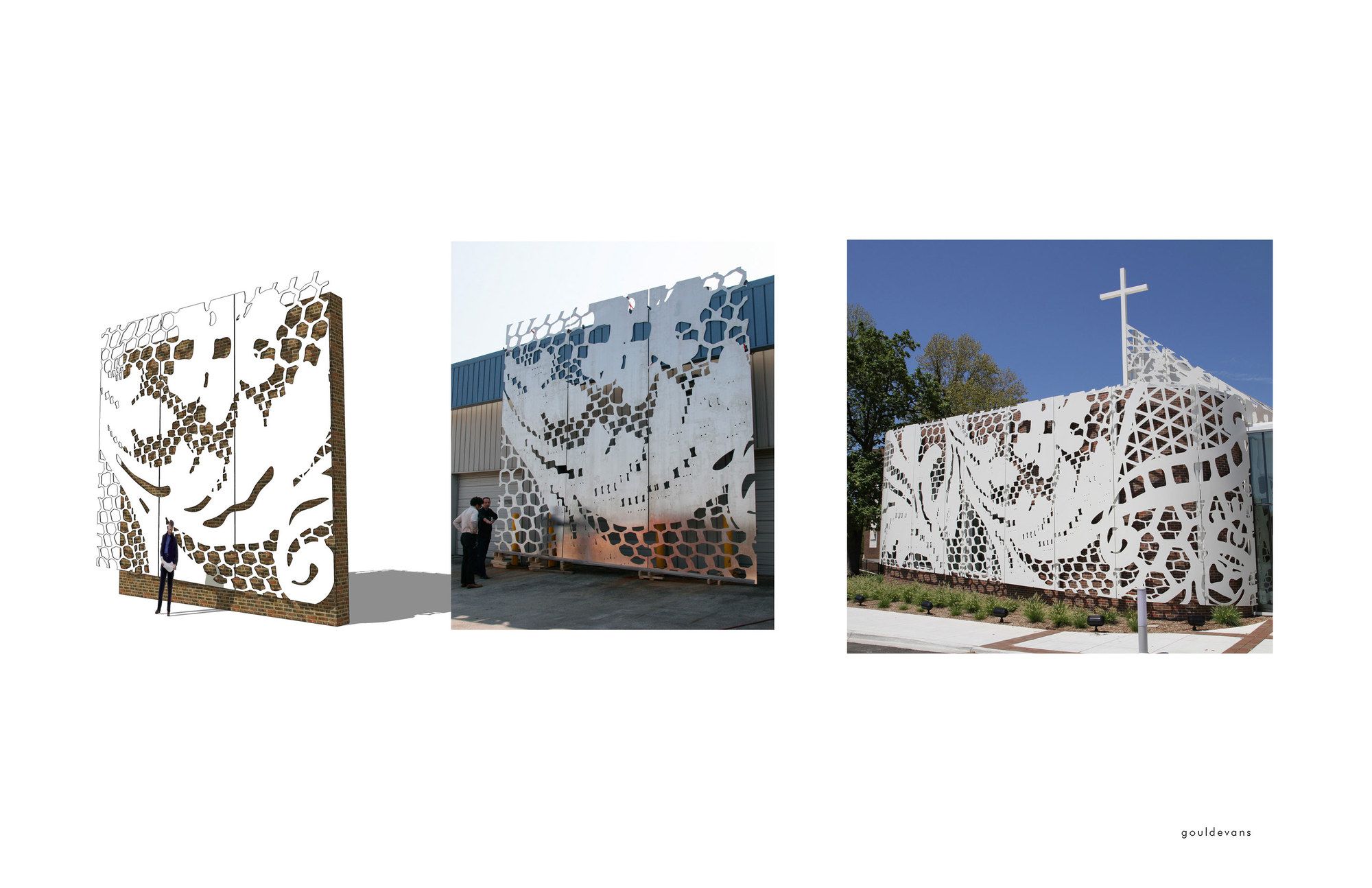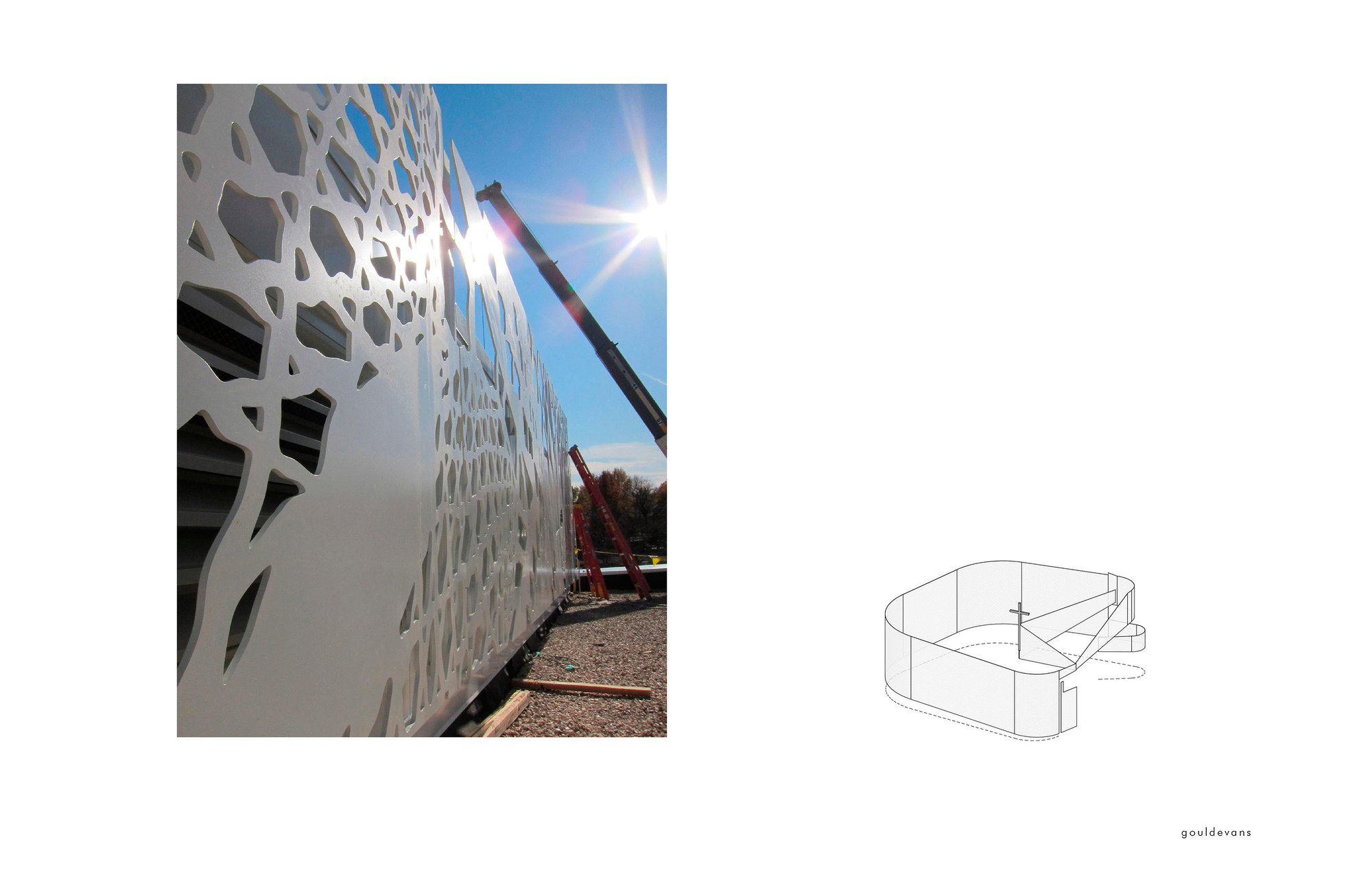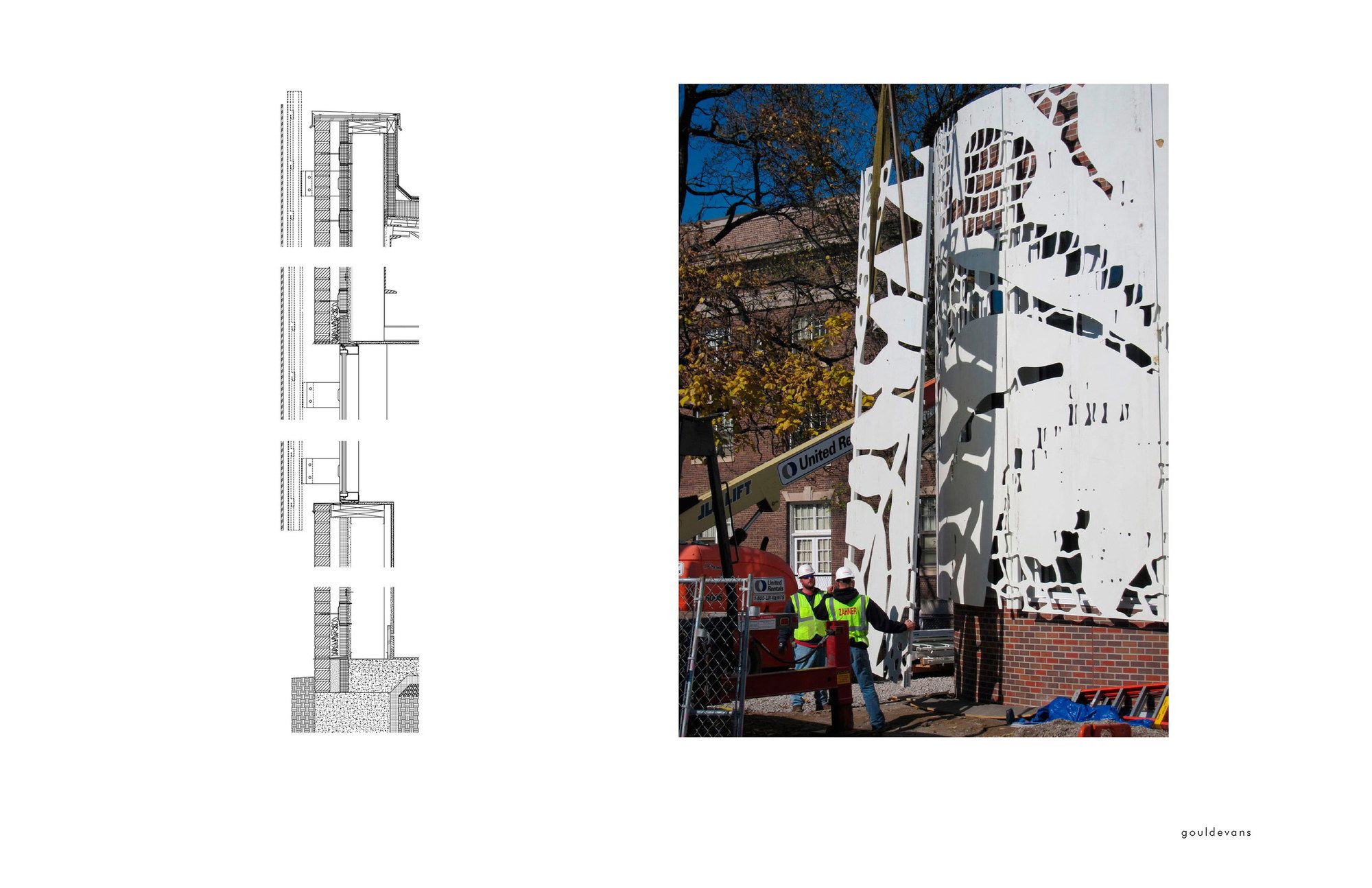At a first glance one wonders why anyone would ever make a building and then wrap it in a facade that looks like lace. But St. Teresa of Avila, the patron saint of lace makers served as an inspiration and somehow linking the narrative to her and to lace only made sense. Delicate, ornate and feminine, this gendered object became the object of inspiration when Gould Evans set out to add a new chapel and academic space on the main quadrangle campus of St. Teresa’s Academy. Creating an institution for education, the architect aimed to strike a balance between the sacred and the secular which also is the very essence of the school’s mission. He did so by creating contrasting spaces for the academy and the chapel – while the latter he tried to link with nature, spirituality and tradition, the classrooms he made as modern, diverse spaces planned as state-of-the-art facilities that doubled up as a banquet hall when combined.
The design was conceptualised using a rectangle and a circle as basic shapes for the classrooms and the chapel respectively. Over time the blatant intersection of the 2 shapes was translated into a softer, more open and inviting form. A lace facade cladding the chapel was conceptualised as an important part of the design as it put forth the kind of contrast/balance between the sacred and secular that the academy wanted to exude at a first glance.
The waterjet cut aluminium panels add a feminine character to the building while the rigid and durable character of the metal gives it a feeling of strength. In a world where religion is equated with orthodoxy and women are still seen as the weaker sex, St. Teresa Academy’s modern vision and its attempt at putting their perspective out there through an architectural intervention is an effort much appreciated today in society.
By: Shamita Chaudhry
photography by © Assassi Productions
photography by © Assassi Productions
photography by © Michael Spillers
photography by © Assassi Productions
photography by © Michael Spillers
Courtesy of Gould Evans
photography by © Assassi Productions
photography by © Assassi Productions
photography by © Assassi Productions
photography by © Michael Spillers
photography by © Assassi Productions
Site Plan
Ground Floor Plan
Lace Process
Elevation
Elevation
Elevation
Elevation
Elevation
Detail
Detail
Detail
Mock Up Process
Panel Diagram
Section Installation


